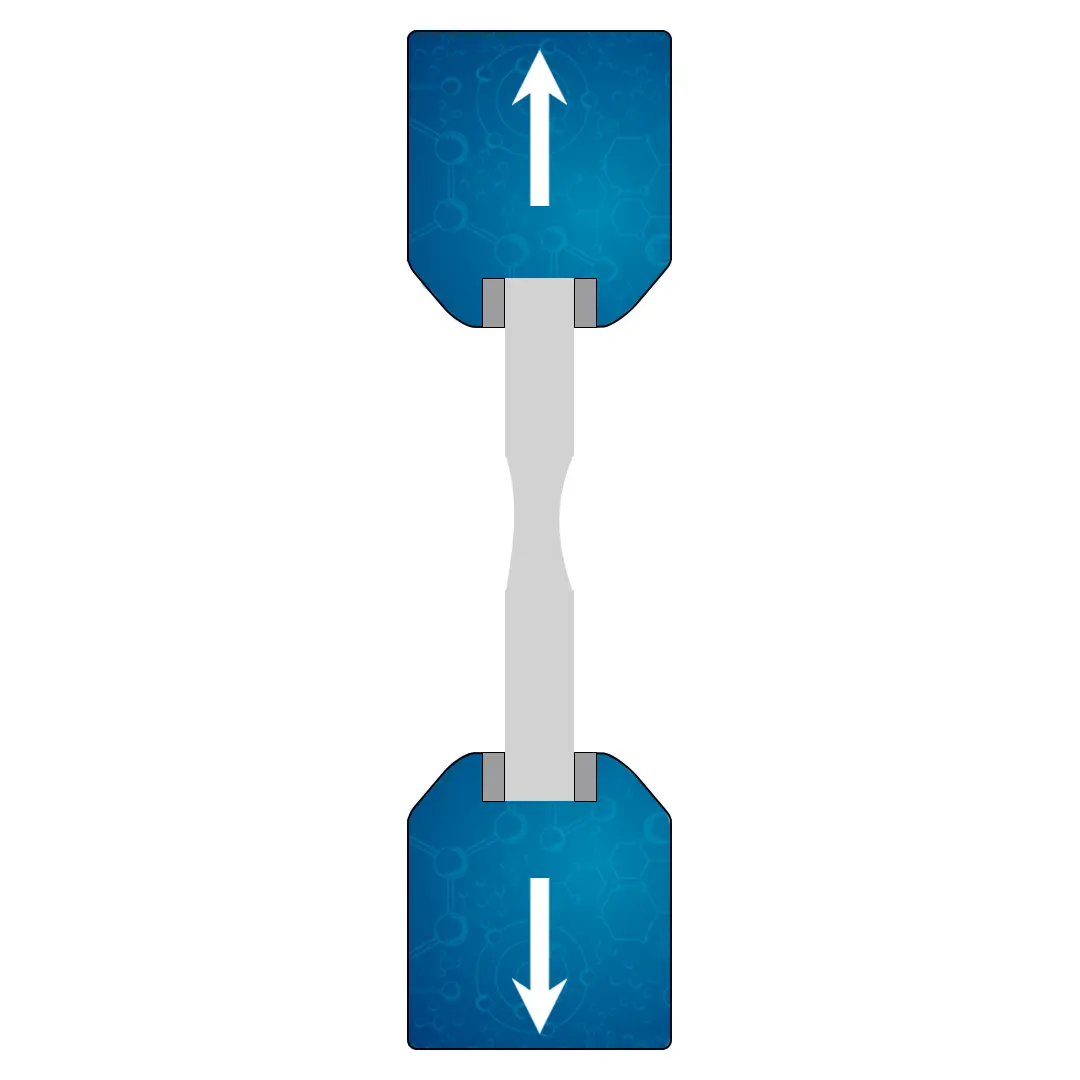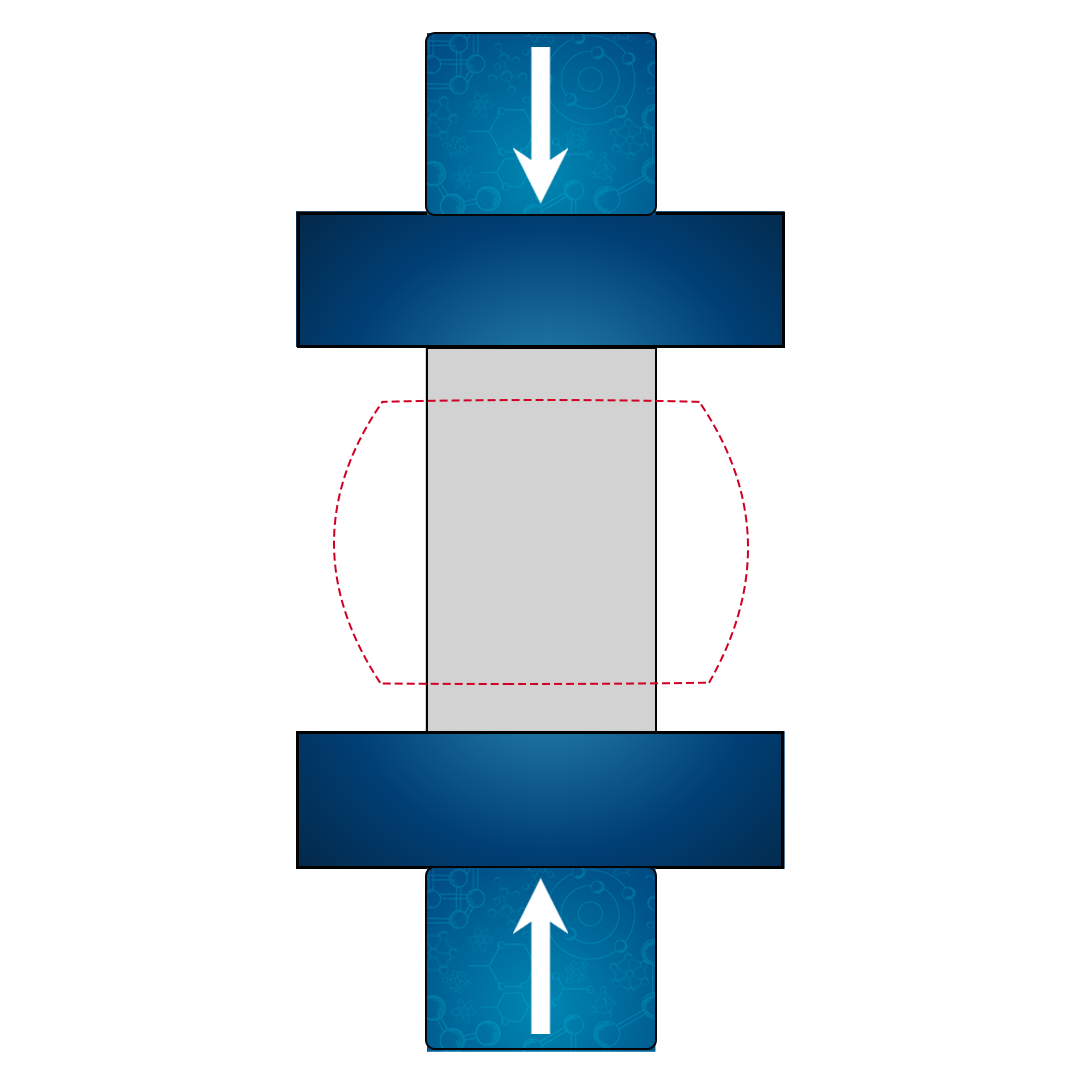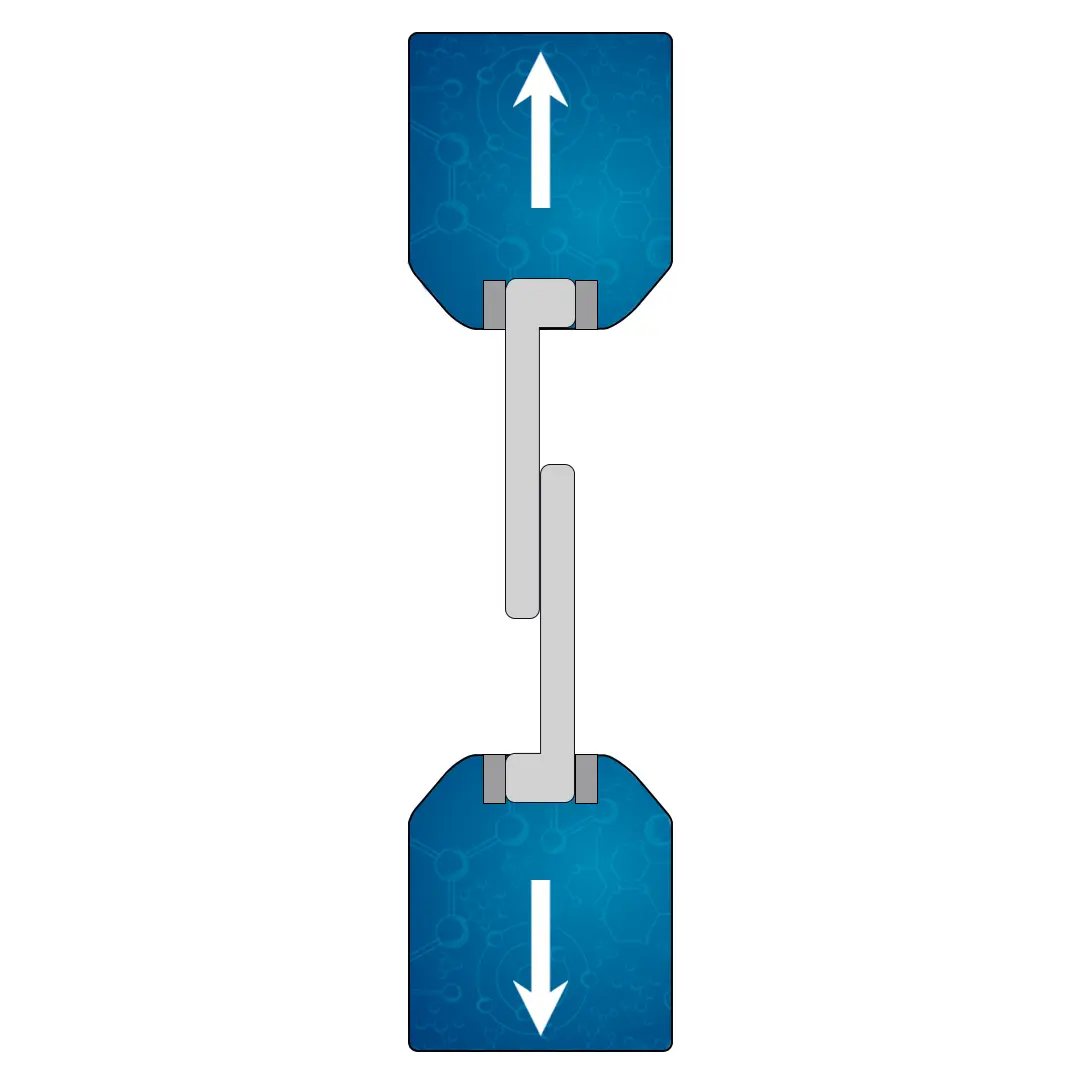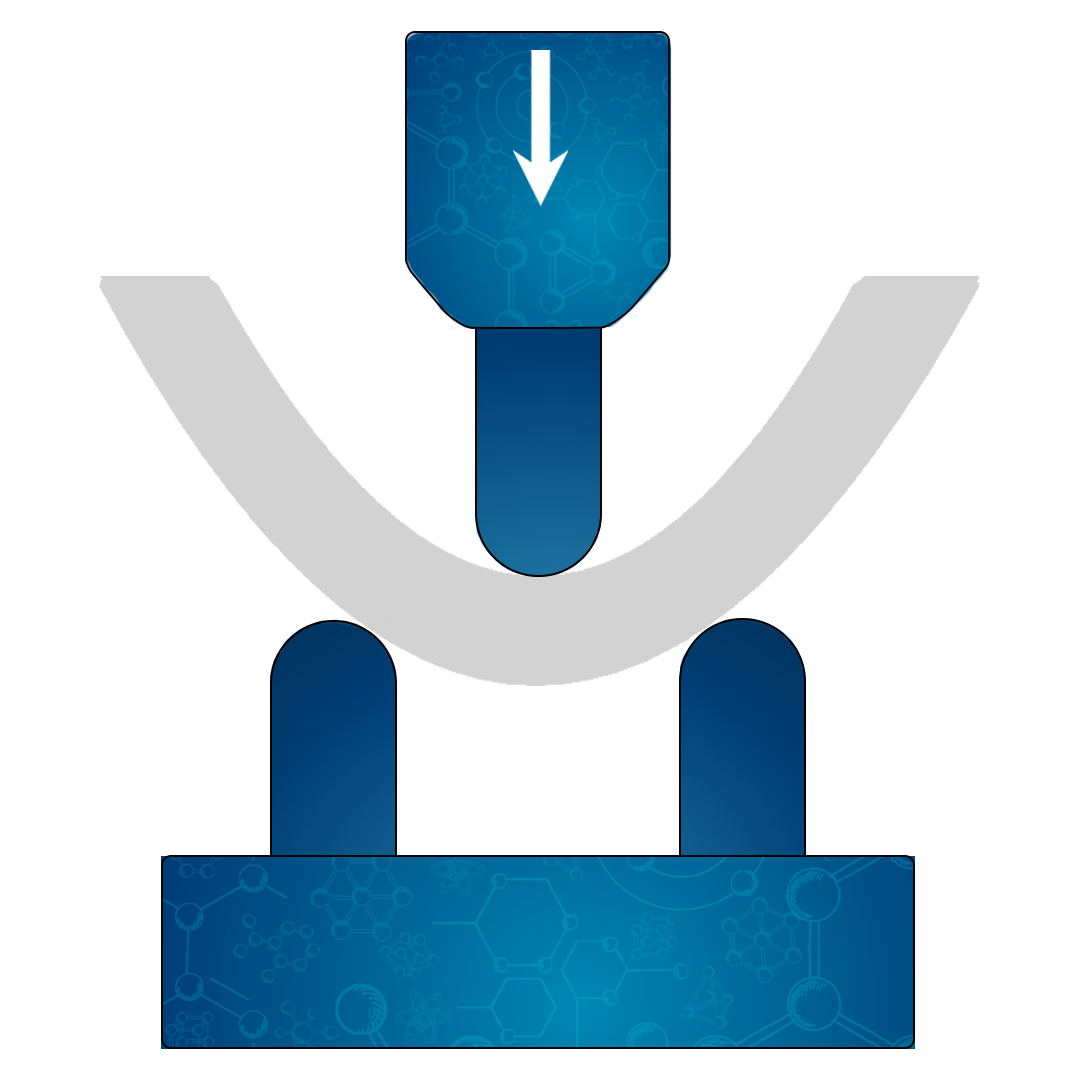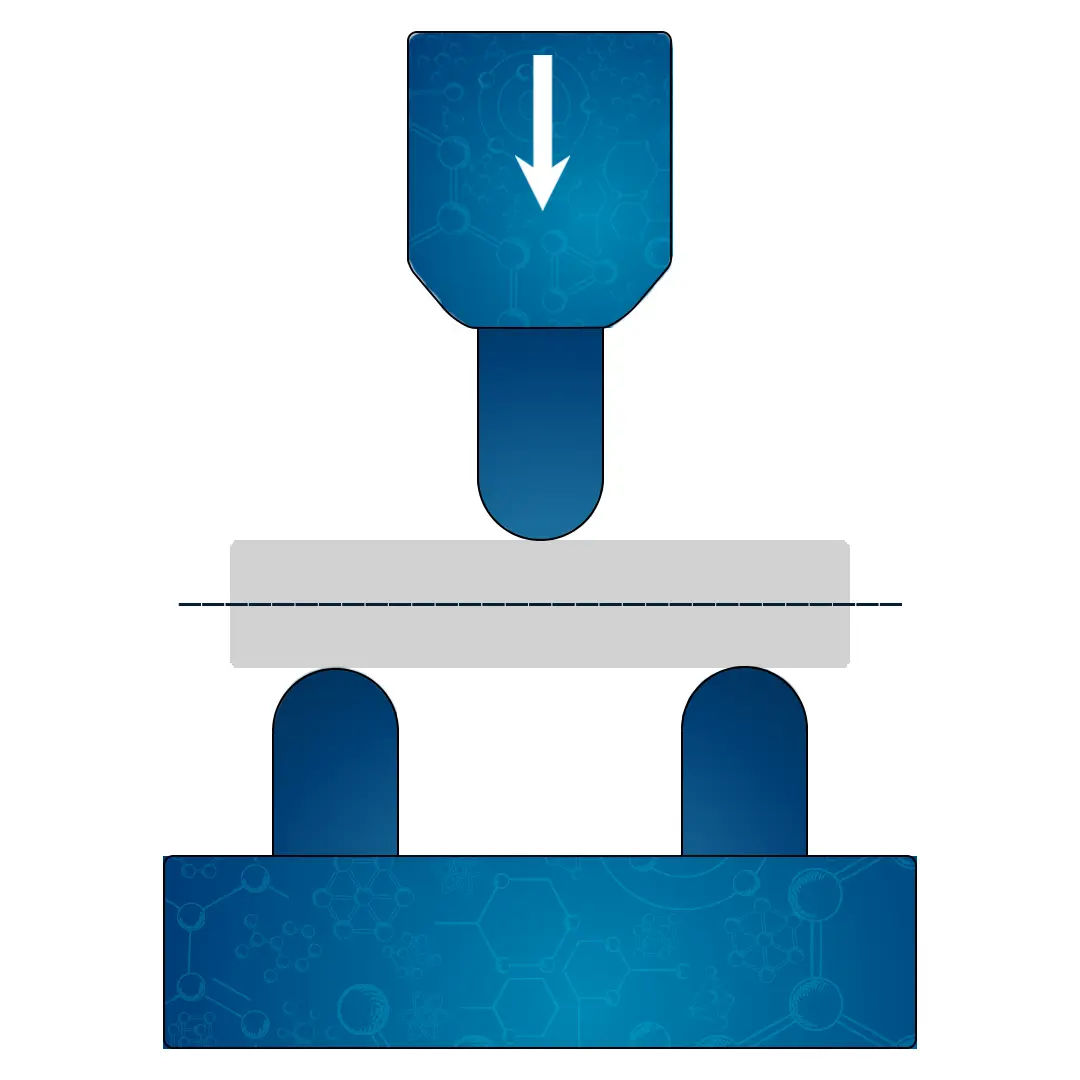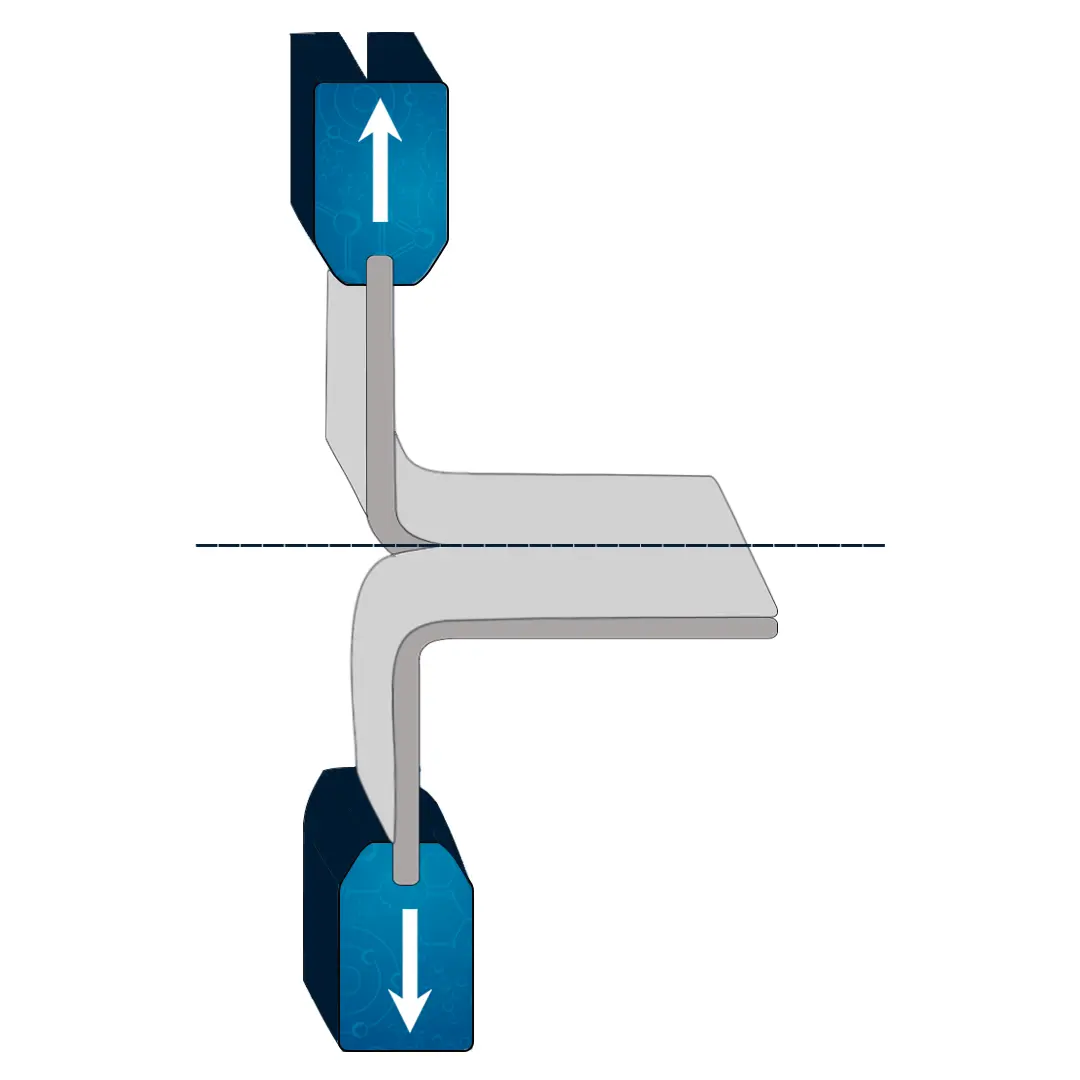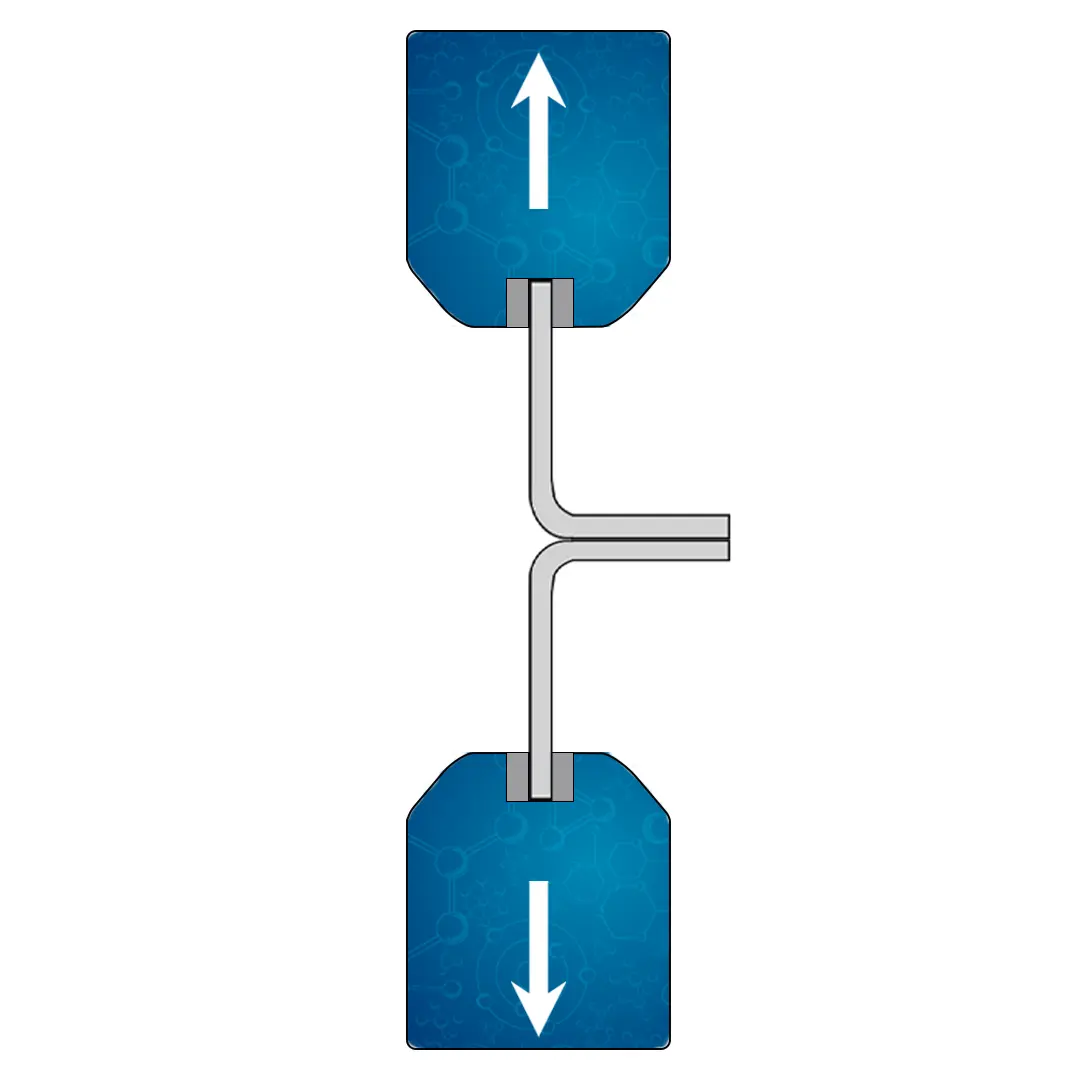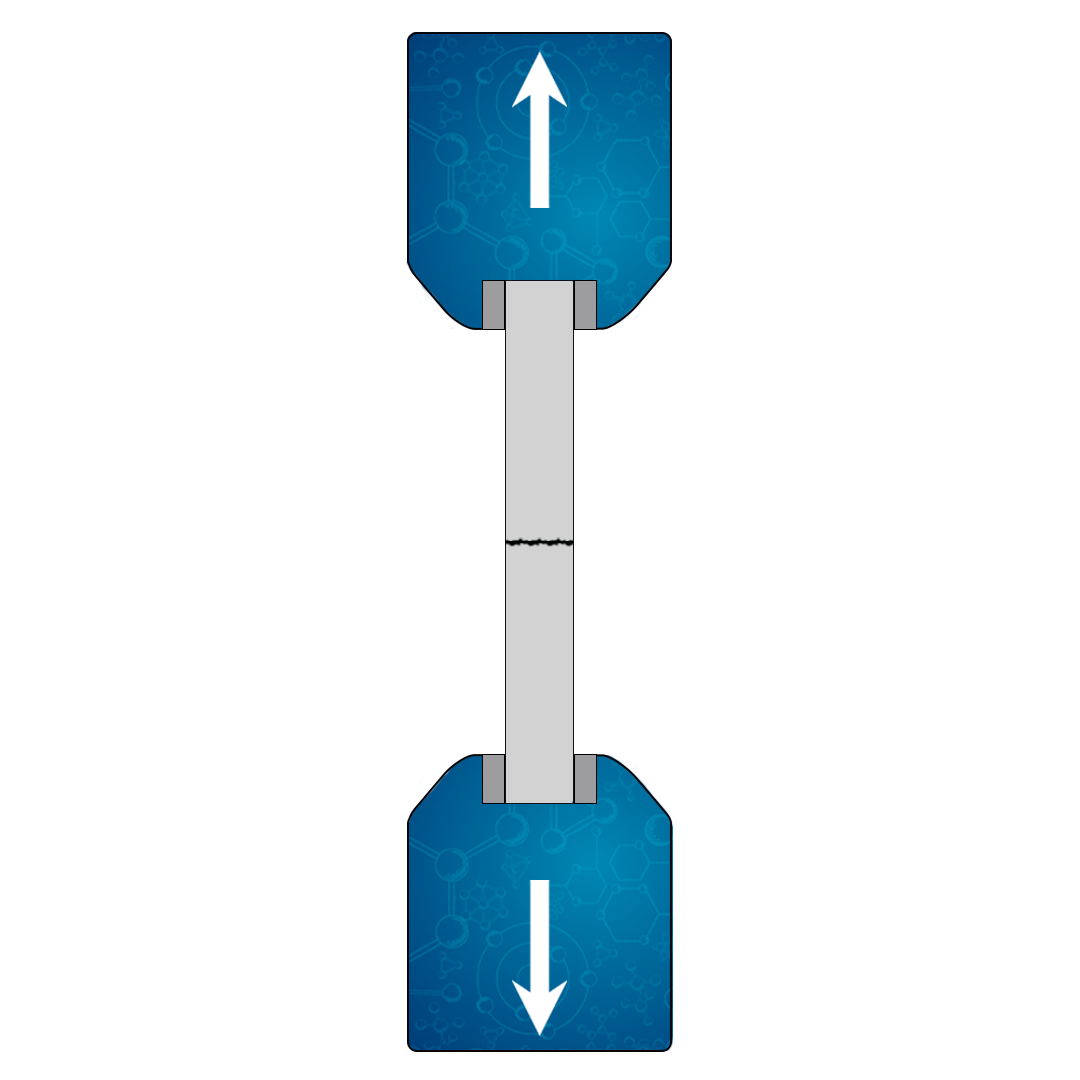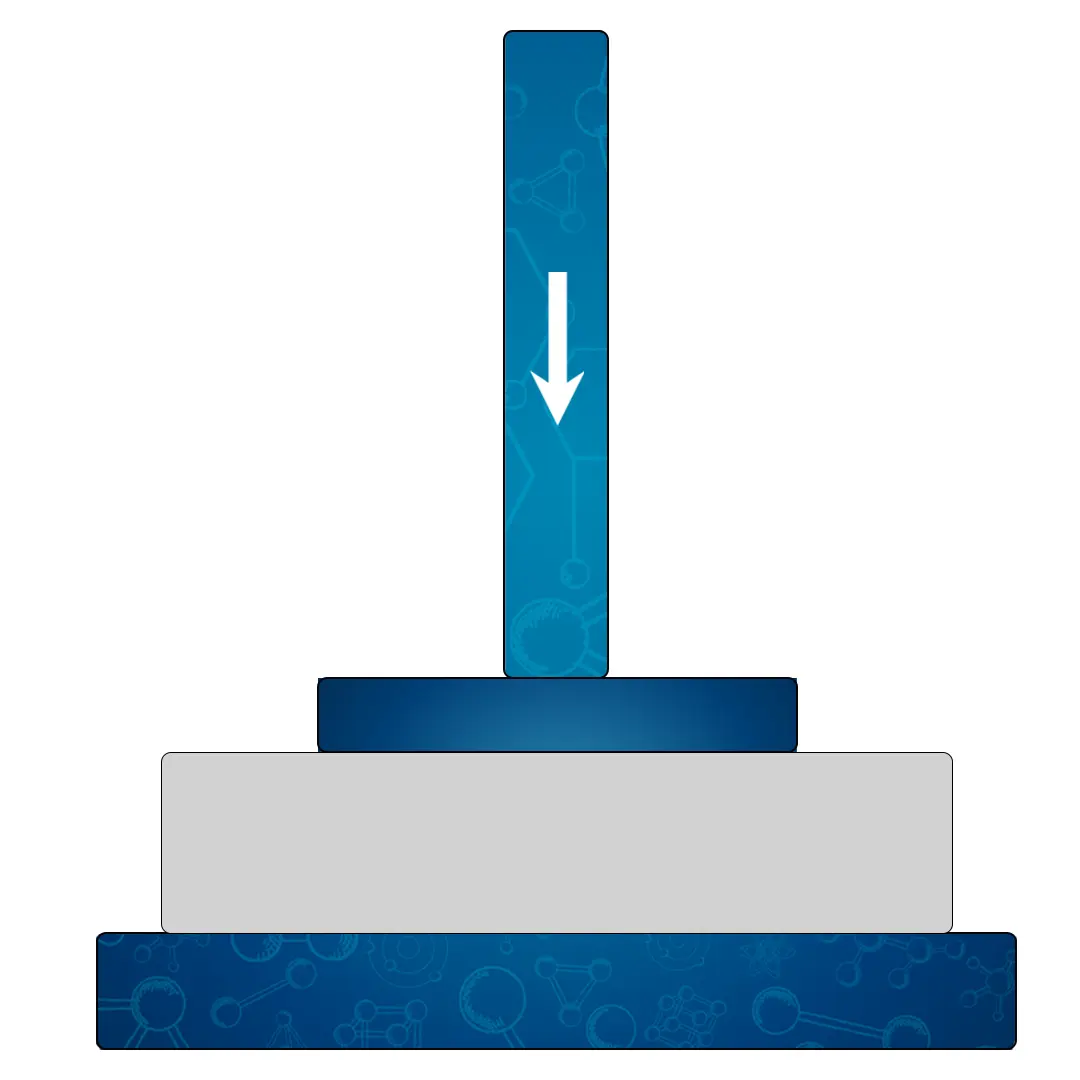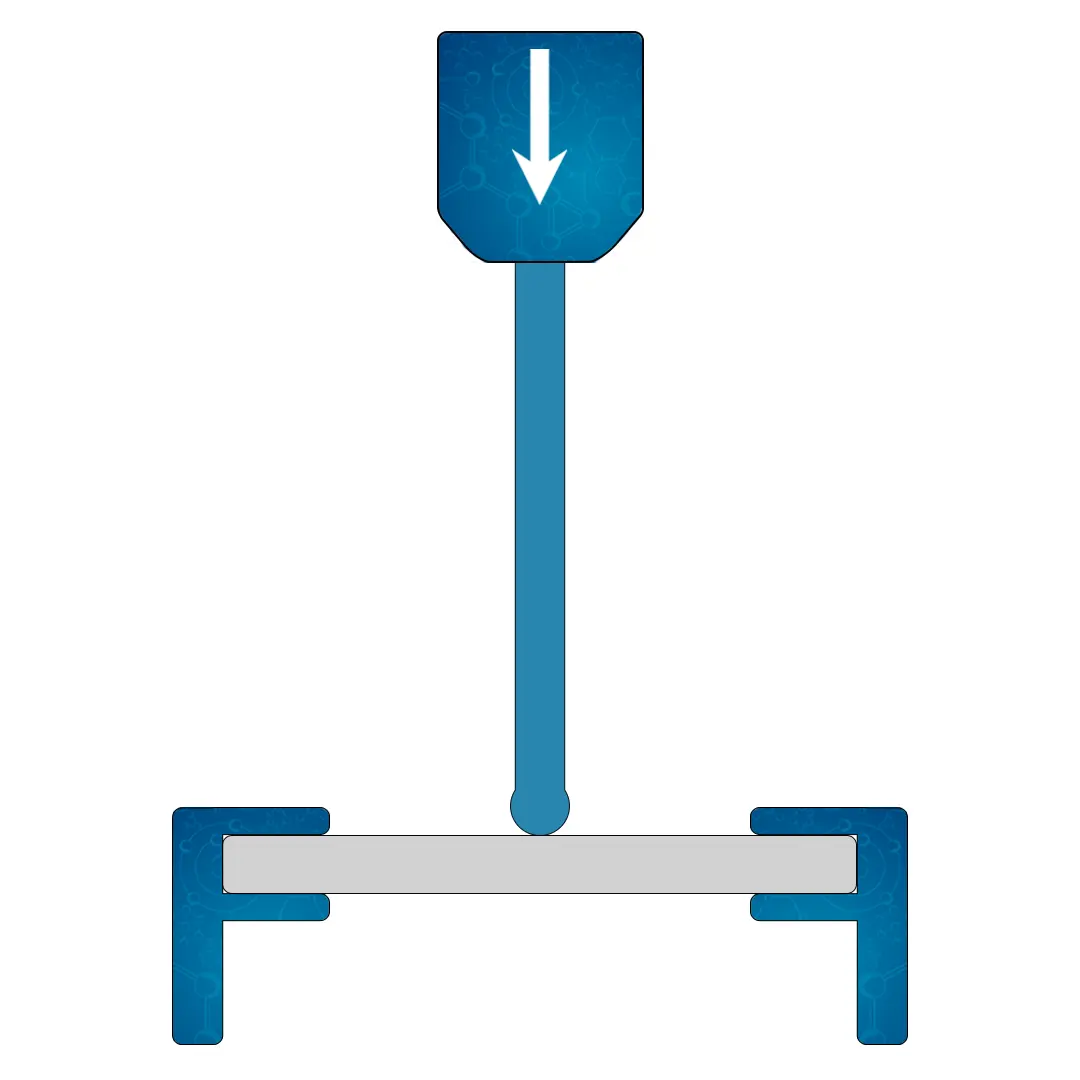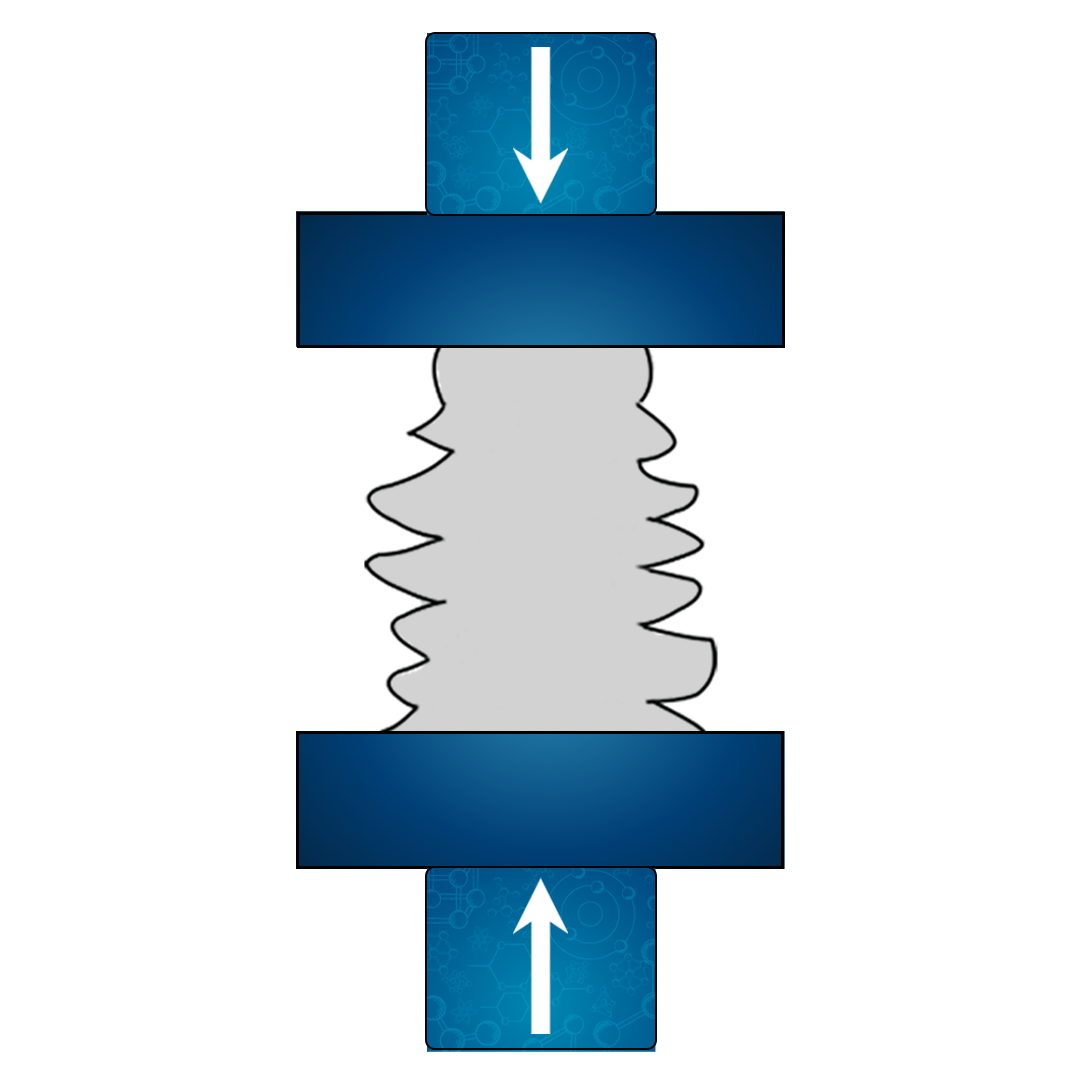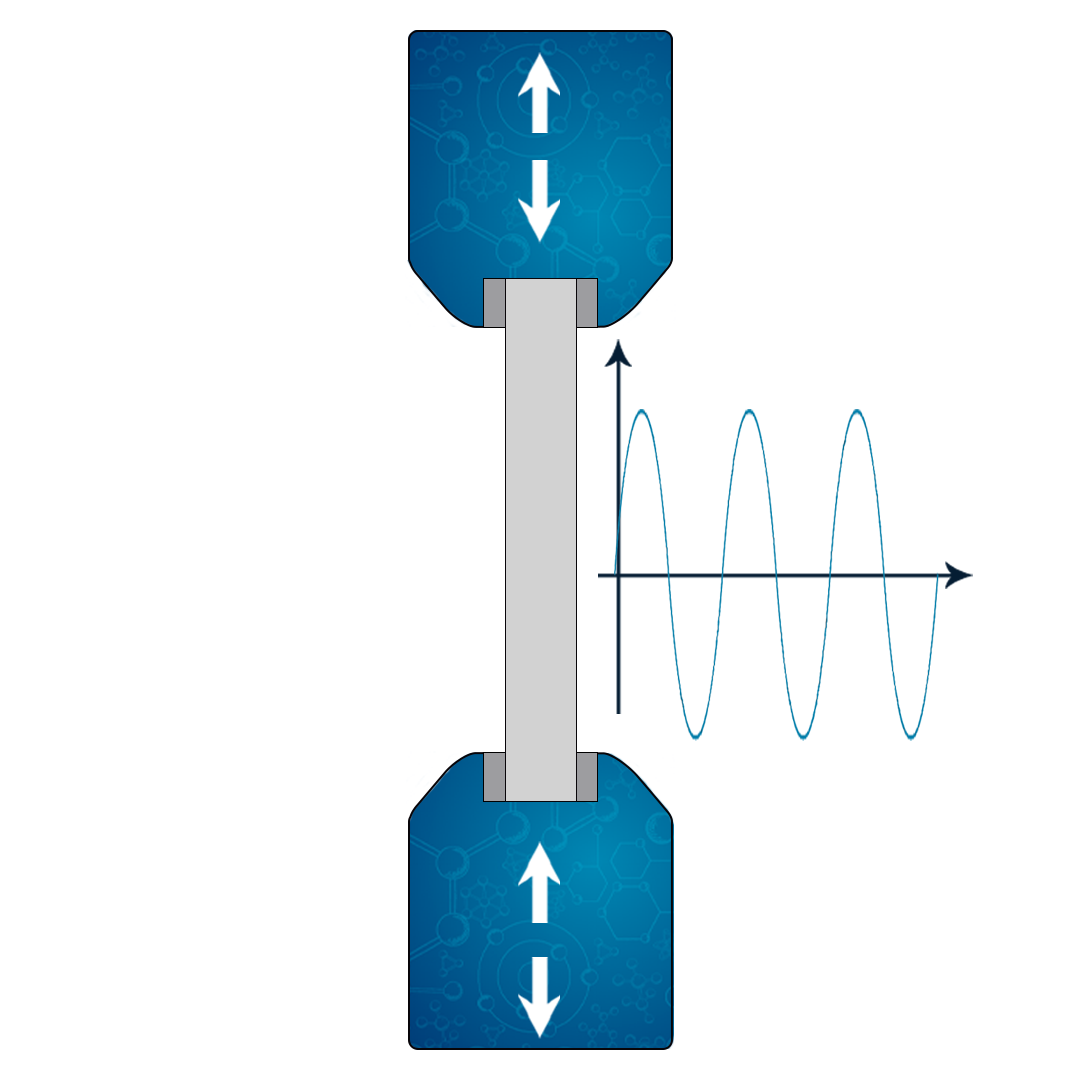Peel testing: an overview about Material Adhesion Strength
This article will delve into the intricacies of peel testing, providing a comprehensive overview of its purpose, process, and significance in various industries. We will begin by defining peel testing, explaining what it is and why it is an essential procedure in the field of material science. We will then explore the process of peel testing in detail, discussing how the test is conducted and what kind of data it provides.
In the following text, you will find a summary of the topics that will be addressed in this article.
What is Peel Testing?
Peel testing, also known as adhesion testing, is a method used in materials science and engineering to measure the bond strength between two materials. This test is particularly important in assessing the performance of adhesive bonds in various products and materials.
The process involves applying a force to separate two bonded surfaces. This is typically done using a machine that applies a controlled force to peel away the adhesive or bonded material. The force exerted and the rate at which the material is peeled off provide critical data about the adhesive strength and quality of the material.
There are different types of peel tests, including the 90-degree, 180-degree, and T-peel tests. The choice of test depends on the materials involved and the specific information required. For example, the 90-degree peel test is often used for rigid adherends and involves peeling the adhesive material at a right angle. The 180-degree peel test is typically used for flexible adherends and involves peeling the material back onto itself.
The results of a peel test can provide valuable insights into the performance of a material under stress, helping engineers and material scientists make informed decisions about material selection and product design. It is a crucial tool in industries such as packaging, electronics, automotive, and biomedical, where the integrity of adhesive bonds is critical for product performance and safety.
Types of Peel Testing
Peel testing is a critical method used to measure the adhesive strength between two materials. There are several types of peel tests, each designed to assess different aspects of a material’s adhesive properties. Here are the three primary types of peel tests:
- T-Peel Test: This test is designed to measure the force required to separate two flexible materials that have been bonded together. The assembly is pulled apart in a ‘T’ configuration, thus the name. This type of test is commonly used to evaluate flexible-to-flexible adhesive bonds, such as those found in laminated or taped materials.
- 90° Peel Test: This test involves peeling one substrate away from another while maintaining a 90-degree angle between the two during the peeling process. It is often used to test a flexible bonded layer’s adhesion strength on a rigid substrate. The peel resistance is measured as the tape is peeled from the substrate.
- 180° Peel Test: The 180° Peel Test is similar to the 90° Peel Test but peels the flexible substrate back onto itself, maintaining an angle of 180 degrees. It is a common method for evaluating the adhesive strength of materials like tapes, labels, and coatings on rigid substrates.
- Peel Wheel Test: Peel wheel, or climbing drum peel test, is often used to test the peel strength of flexible-to-rigid laminates, such as in the case of composite materials. The flexible material is wrapped around a rotating drum, applying a peeling force at a consistent rate.
- Floating Roller Peel Test (ASTM D3167): In this test, a weighted roller is applied to the flexible adhered material and moves at the same rate as the material being peeled. It’s often used to test the adhesion strength of flexible-to-rigid laminates or large surface area bonds where traditional peel methods may not be as effective.
Additional tests
In addition to the T-Peel, 90° Peel, and 180° Peel tests, there are several other types of peel tests used in various industries to assess the adhesive properties of materials. Here are a few more examples:
- Climbing Drum Peel Test (ASTM D1781): This test is used to measure the peel resistance of adhesive bonds on products that have a flexible adherend and a rigid adherend. The flexible adherend is wrapped around a drum, and the force required to peel the flexible material from the rigid material is measured as the drum rotates.
- Variable Angle Peel Test: This test allows the peel angle to be adjusted, which can provide valuable information about how the peel strength of a material changes with the peel angle. This test can be particularly useful for materials that are expected to undergo peeling at various angles in their actual use.
- Loop Tack Test (ASTM D6195): This test measures the initial tack of pressure-sensitive materials. A loop of material is brought into contact with a standard test panel and then peeled away. The maximum force required to peel the material away is measured.
Each of these tests provides unique insights into the adhesive properties of materials, allowing engineers and material scientists to make informed decisions about material selection and product design.

90 degree peel

180 degree peel
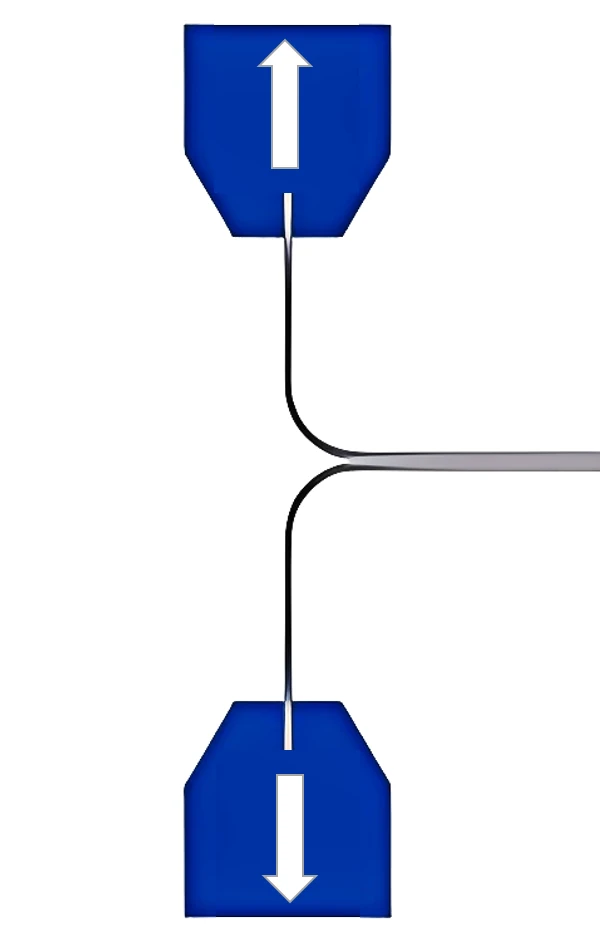
T peel

Peel whell

Floating roller
What is the importance of Peel testing?
Peel testing plays a critical role in various sectors, particularly in industries involved in the manufacturing and quality control of products that require bonding of different materials. Here are some key reasons why peel testing is important:
- Product Quality and Reliability: Peel testing can help ensure that a product performs reliably under its expected use conditions. If an adhesive bond fails prematurely, the performance and integrity of the product could be compromised.
- Design and Material Selection: By assessing the peel strength of different adhesives or coatings on various substrates, engineers can make informed decisions about which materials to use in their designs. This is particularly important in industries such as aerospace, automotive, packaging, and electronics, where the reliability of adhesive bonds is paramount.
- Quality Control and Compliance: Many industries have standards and regulations that products must meet to ensure safety and functionality. Peel testing is often required to demonstrate compliance with these standards.
- Cost Efficiency: By identifying the best adhesive for a particular application, companies can avoid the potential costs associated with product failures or recalls. Additionally, the process can help in reducing over-engineering, thus saving on material costs.
- Research and Development: Peel testing is a valuable tool in R&D for the development of new adhesives or the improvement of existing ones. It allows scientists to compare the effectiveness of different formulas and make adjustments as needed.
What are the properties obtained in the Peel testing?
Peel testing provides vital data about the adhesive properties of different materials. These properties offer crucial insights that help engineers and scientists in their design, selection, and quality assurance processes. Here are some of the key properties obtained from peel testing:
- Peel Strength: This is the primary property determined through peel testing. It is the maximum force required to peel or separate the adhesive or coating from its substrate. Peel strength is usually reported in units of force per width (e.g., N/mm or lb/in).
- Peel Energy: Also known as the work of adhesion, this is the energy required to propagate the peeling process. It can be calculated by integrating the area under the force vs displacement graph.
- Mode of Failure: The way in which the materials separate can offer insights into the quality of the bond. It can be adhesive failure (failure at the adhesive-substrate interface), cohesive failure (failure within the adhesive or substrate material), or a combination of both.
- Consistency of Peel: The consistency or variability of the peel force throughout the testing process can provide information about the uniformity of the adhesive or the bonding process.
- Comparison of Different Materials: Peel testing can also help in comparing the adhesive strength of different materials or adhesives, enabling an informed decision-making process for material selection.
- Performance Under Specific Conditions: The test can provide data on how the material performs under various conditions such as different temperatures, humidity levels, or after aging.
What are the properties obtained in the Peel testing?
Peel testing provides vital data about the adhesive properties of different materials. These properties offer crucial insights that help engineers and scientists in their design, selection, and quality assurance processes. Here are some of the key properties obtained from peel testing:
- Peel Strength: This is the primary property determined through peel testing. It is the maximum force required to peel or separate the adhesive or coating from its substrate. Peel strength is usually reported in units of force per width (e.g., N/mm or lb/in).
- Peel Energy: Also known as the work of adhesion, this is the energy required to propagate the peeling process. It can be calculated by integrating the area under the force vs displacement graph.
- Mode of Failure: The way in which the materials separate can offer insights into the quality of the bond. It can be adhesive failure (failure at the adhesive-substrate interface), cohesive failure (failure within the adhesive or substrate material), or a combination of both.
- Consistency of Peel: The consistency or variability of the peel force throughout the testing process can provide information about the uniformity of the adhesive or the bonding process.
- Comparison of Different Materials: Peel testing can also help in comparing the adhesive strength of different materials or adhesives, enabling an informed decision-making process for material selection.
- Performance Under Specific Conditions: The test can provide data on how the material performs under various conditions such as different temperatures, humidity levels, or after aging.
How to calculate the Peel testing?
Calculating the peel strength in peel testing involves measuring the force required to separate the adhesive or coating from its substrate. The general steps involved in the calculation are as follows:
- Sample Preparation: Prepare the test sample according to the specific requirements of the test type. This usually involves creating a bonded assembly of the adhesive and substrate materials.
- Test Setup: Fix the sample onto the peel testing machine. Depending on the test type, one end of the sample may be fixed to the machine, while the other end is attached to the moving part of the machine.
- Force Application: The machine applies a force to the sample to peel or separate the adhesive from the substrate. This force is increased until the bond breaks or the peel is initiated.
- Force Measurement: The peel test equipment records the force exerted to peel the adhesive from the substrate. Modern testing machines typically have a built-in system that automatically records the force data.
- Calculation of Peel Strength: Peel strength is calculated as the maximum force required to peel the adhesive divided by the width of the sample. It’s typically reported in units like N/mm or lb/in.
This is a general procedure, and actual testing may vary based on the test type (T-peel, 90-degree peel, etc.) and the specific standards followed (ASTM, ISO, etc.).
Different types of materials using the Peel testing
Metallic Materials:
- Aluminum 6061: A widely used metal for its excellent strength-to-weight ratio. In peel tests, its performance depends on the adhesive used and the surface preparation.
- Copper C11000: A pure copper variant used in various industries due to its excellent electrical and thermal conductivity. It usually forms a strong bond with many adhesive materials.
- Stainless Steel 304: Known for its exceptional corrosion resistance, it is used in various applications. Its passive oxide layer can present adhesive bonding challenges.
- Titanium Ti-6Al-4V: A high-strength, lightweight alloy used in aerospace, medical, and high-performance automotive industries. Its oxide layer makes adhesion during peel testing challenging.
Polymer Materials:
- Polyethylene (PE): A commonly used plastic known for its high ductility and chemical resistance. Its molecular structure can make it difficult to adhere to, but surface treatments can enhance adhesion.
- Polypropylene (PP): Appreciated for its lightweight and high tensile strength, it’s used in various applications. Its semi-crystalline structure makes adhesion challenging without surface modification.
- Polystyrene (PS): A hard, brittle plastic used in packaging and insulation. Despite its widespread use, adhesion can be difficult due to its low surface energy.
- Polyvinyl Chloride (PVC): Known for its durability and flame retardancy, it’s widely used in construction and clothing. Its surface energy is higher than other polymers like PE or PP, often resulting in better adhesion.
Ceramic Materials:
- Alumina (Al2O3): It’s commonly used due to its high hardness and thermal stability. Alumina can present challenges in peel tests due to its inherent brittleness and surface characteristics.
- Zirconia (ZrO2): Known for its high toughness, Zirconia is often used in high-strength applications. Adhesion in peel tests can be improved with surface treatments.
- Silicon Carbide (SiC): This ceramic material is known for its high hardness and excellent thermal conductivity. SiC can be challenging to bond due to its surface characteristics.
- Silicon Nitride (Si3N4): Used in high-strength applications, it presents challenges for adhesion due to its surface properties.
Composite Materials:
- Glass Fiber Reinforced Polymer (GFRP): A high-strength, lightweight material often used in various industries. It typically shows strong adhesion in peel tests, especially with surface treatment.
- Carbon Fiber Reinforced Polymer (CFRP): Known for its high strength and stiffness, CFRP usually exhibits strong adhesion in peel tests, particularly when surface treatments are employed.
- Polymer Matrix Composite (PMC): These composites have a polymer as a matrix material and usually a glass or carbon fiber as the reinforcement. Their peel strength values depend heavily on the specific formulation of the composite.
- Metal Matrix Composites (MMC): MMCs combine a metal matrix with ceramic or other high-strength materials for reinforcement. They can present challenges in peel testing due to the combination of materials involved.
The adhesive’s performance will depend on the specific material, adhesive used, surface preparation, and the testing conditions. Therefore, obtaining meaningful results necessitates conducting the peel testing under conditions that closely simulate the intended use.
Peel testing on a Universal Testing Machine
A Universal Testing Machine (UTM) is a versatile piece of equipment that can perform a variety of tests, including peel testing. It is composed of several key components:
- Frame: The frame, also known as the load frame, is the structural backbone of the UTM. It needs to be robust enough to withstand the forces applied during the testing process. It consists of two crossheads; one is typically fixed, while the other can move up or down based on the control of the machine.
- Motor and Transmission System: The motor generates the movement required to apply the force or displacement for the test. It is connected to the movable crosshead via a transmission system, which could be a screw, hydraulic system, or a servo motor, depending on the type and model of the UTM.
- Load Cell: The load cell is the component that measures the force applied during the test. It converts the force into an electrical signal that can be read and recorded by the control system.
- Grips: The grips or fixtures are used to hold the test specimen in place. For peel tests, specific grips are used to hold the material while a peeling force is applied. The design of the grip ensures the test sample is held firmly without slippage and doesn’t induce additional stress concentrations.
- Extensometer: While not always necessary for peel tests, an extensometer is used in some testing scenarios to measure the change in length (strain) of the sample.
- Control System: The control system runs the test, controlling the motor and recording the data from the load cell (and extensometer, if used). This system also includes the software that allows the user to set up the test parameters, run the test, and analyze the results.
- Safety Features: UTMs will also typically include safety features, such as emergency stop buttons and limit switches, to prevent damage to the machine or injury to the operator.
It’s important to note that while this is a general overview, the specific components and their configuration can vary based on the design and functionality of the particular UTM model.
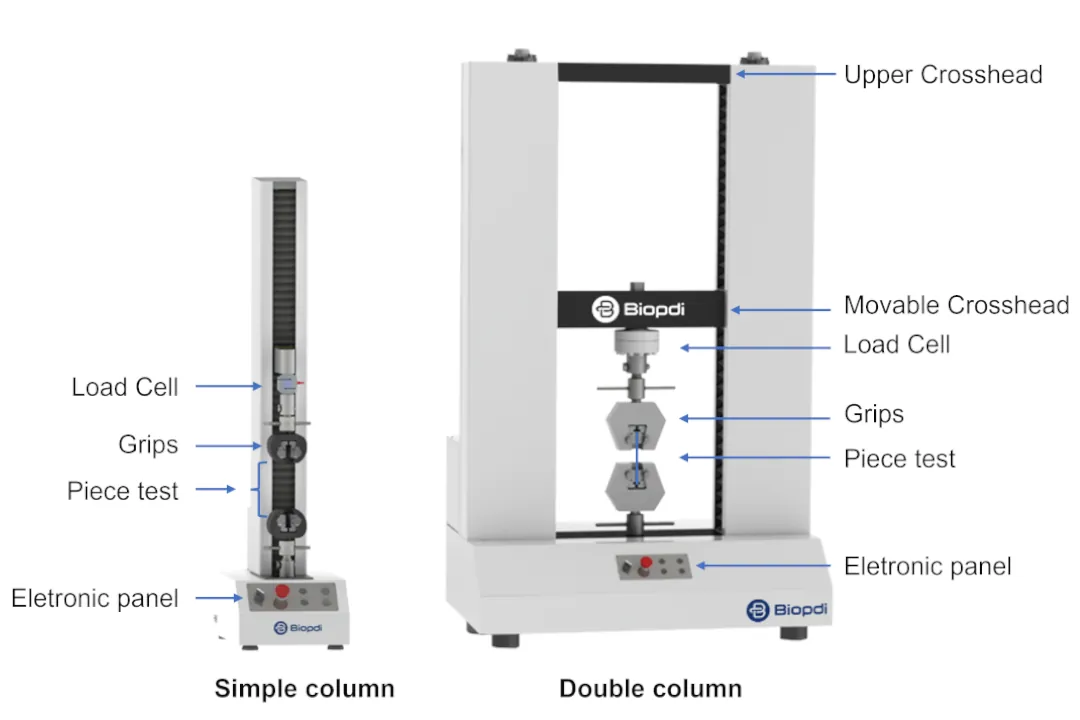
The procedures for conducting a Peel testing using a Universal Testing Machine
Conducting a peel test using a Universal Testing Machine (UTM) involves a series of steps. While the exact procedures might vary slightly based on the type of peel test and the specific machine, here is a general outline of the process:
- Preparation of Test Samples: The first step is to prepare the test samples. This involves bonding two materials together using the adhesive or process you wish to test. It’s essential that the preparation is done consistently for all test samples to ensure reliable results.
- Mounting of Test Sample: Once the test sample is prepared, it is securely mounted in the UTM. In a peel test, one end of the bonded sample is typically fixed in the upper grip, while the free end is inserted into the lower grip, maintaining the required peel angle (180°, 90° or T-Peel).
- Setting Test Parameters: The next step is to set the test parameters on the control system of the UTM. This includes the speed of the test, the data acquisition rate, and any safety limits.
- Conducting the Test: Once everything is set, the test can be started. The control system will move the crosshead at the specified speed, peeling the two materials apart while measuring the force required to do so.
- Data Collection: During the test, data is collected by the control system. This usually includes the peel force and the displacement of the crosshead.
- Analysis: After the test, the collected data can be analyzed. This usually involves calculating the average peel strength (the peel force divided by the width of the sample), plotting graphs of the peel force against displacement, and looking for any unusual features in the data.
Always follow any safety procedures specified for your particular UTM, including using appropriate personal protective equipment (PPE). It’s also important to note that different standards may have specific requirements for conducting peel tests, such as ASTM D6862 for 90° peel testing, or ASTM D1876 for T-Peel testing. Always ensure you are complying with any relevant standards for your particular application.
The data obtained in the Peel testing using the Universal Testing Machine
When conducting a peel test using a Universal Testing Machine (UTM), several types of data can be collected and analyzed:
- Peel Force: This is the primary data collected during the peel test. It is the force required to peel the two materials apart and is usually measured in Newtons (N). This force will vary throughout the test, and the UTM will typically record the force at regular intervals to create a force vs. displacement or time graph.
- Displacement or Extension: This refers to the distance the movable grip travels during the test, effectively showing how much the test sample has been stretched. This data, when combined with the force data, allows for a detailed understanding of how the peel strength varies throughout the test.
- Peel Strength: While not directly measured, peel strength is a key metric calculated from the peel force and the width of the sample. It is usually expressed in N/mm or N/m. The average peel strength across the test can provide a single number to compare different samples or materials, but it’s also useful to look at how the peel strength varies throughout the test.
- Failure Mode: After the test, the sample can be examined to identify the type of failure that occurred. Did the adhesive fail (adhesive failure), did one of the materials fail (cohesive failure), or was it a combination of both? The failure mode can provide important information about the performance of the adhesive or the materials.
- Energy to Peel: This is another calculated value, which represents the work done during the peeling process. It’s obtained by calculating the area under the force vs. displacement graph.
The analysis and interpretation of this data will depend on the specific requirements of your testing standard or your particular application. Understanding and interpreting this data can help in material selection, quality control, and in developing and improving adhesive processes.
Samples/specimens used to perform the Peel testing in the Universal Testing Machine
In peel testing, the specimens are typically made of two different materials bonded together with an adhesive layer. The materials chosen can be metallic, polymeric, ceramic, or composite, depending on the application or research interest. The peel test aims to determine the strength and performance of this adhesive bond.
In terms of the physical specifications of the samples, these can vary depending on the standard being followed and the specific requirements of the test. For example, ASTM D6862 (Standard Test Method for 90 Degree Peel Resistance of Adhesives) specifies that the bonded area of the sample should be 25 mm wide and 150 mm long.
For a peel test, the samples should be prepared so that there is a tab or free end that can be gripped by the UTM to initiate the peeling process. This often involves leaving a portion of the materials un-bonded during the sample preparation.
It’s also worth noting that the quality of the bonding process and the surface preparation of the materials can greatly affect the results of the peel test. These factors need to be carefully controlled to ensure reliable and repeatable results.
In terms of the adhesive itself, this can be any type of adhesive that is suitable for bonding the chosen materials. It could be a pressure-sensitive adhesive (like a sticker or tape), a heat-activated adhesive, a chemically curing adhesive (like an epoxy), or any other type of adhesive.
The specifics of your sample preparation and testing procedure should always follow the requirements of the relevant testing standards and the specifics of your application.
Standards for Peel Testing
Peel testing is governed by a variety of international standards, each catering to specific conditions or materials. Here are five standards from the International Organization for Standardization (ISO) and five from the American Society for Testing and Materials (ASTM):
ISO Standards:
- ISO 8510-1: This standard specifies a method for determining the peel adhesion of self-adhesive tapes at a 180-degree angle.
- ISO 8510-2: This standard outlines the method for determining the peel adhesion of self-adhesive tapes at a 90-degree angle.
- ISO 4578: This standard is used for determining the peel strength of flexible-bonded-to-rigid test specimen assemblies.
- ISO 11339: This standard specifies a T-peel test method to determine the peel strength of adhesives for flexible-to-flexible bonded assemblies.
- ISO 11644: This standard specifies a method for determining the peel strength of a flexible-to-rigid bonded assembly using a floating roller.
ASTM Standards:
- ASTM D3330/D3330M: This standard covers six test methods for measuring the peel adhesion of pressure-sensitive tapes.
- ASTM D6862: This standard covers the determination of the peel resistance of adhesive bonds on products that have a flexible adherend and a rigid adherend.
- ASTM D903: This standard covers the determination of the comparative peel or stripping characteristics of adhesive bonds.
- ASTM D1876: This standard covers a test method for determining the peel resistance of adhesives in a T-peel configuration.
- ASTM D3167: This standard covers a test method for floating roller peel resistance of adhesives.
- ASTM F88/F88M: This standard covers the measurement of the strength of seals in flexible barrier materials.
- ASTM D5170: This standard covers the determination of the peel strength of adhesive bonds between: a flexible adherend and a rigid adherend, and the linings of a double ball ramp brake.
Each of these standards provides a specific methodology for conducting peel tests, including the preparation of test specimens, the speed at which the test should be conducted, and the environmental conditions under which the test should be performed. These standards ensure that peel testing results are reliable, repeatable, and can be compared across different materials and adhesives.
The main applications of the Peel testing
Peel testing has a broad range of applications in various industries, often playing a crucial role in quality control, research and development, and product validation. Here are some of the main applications:
- Adhesives Industry: This is perhaps the most common use of peel testing. The strength and reliability of adhesive bonds are critical, especially for high-stress applications. Peel testing allows manufacturers to compare the performance of different adhesives, or to test the effect of changes to the adhesive formulation.
- Packaging Industry: Peel tests are used to measure the seal strength of flexible packaging materials, such as food and medical packaging. This is important not only for maintaining the integrity of the package during transport and storage but also for ensuring that the package can be opened by the end-user without excessive force.
- Electronics and Semiconductors: Adhesives are often used to bond components in electronics manufacturing. Peel testing can ensure the reliability of these bonds, especially for components that may be subject to mechanical stress.
- Aerospace and Automotive Industries: Adhesives are increasingly replacing traditional fasteners in these industries due to their ability to distribute stress evenly and reduce weight. Peel testing can be used to evaluate these adhesives under different conditions, helping to ensure the safety and reliability of vehicles and aircraft.
- Medical Devices and Biomedical Applications: Adhesives are used in a variety of medical devices, from bandages to complex implants. Peel testing in these cases can ensure that the adhesive will perform reliably without causing adverse reactions in the body.
- Construction Materials: Peel testing can be used to evaluate the performance of adhesives used in construction, such as those used for roofing materials, wall coverings, or floorings.
- Paints and Coatings: Peel testing can help measure the adhesion of paints and coatings to various substrates, helping to predict and prevent premature failures.
By ensuring the integrity of adhesive bonds, peel testing can help to prevent product failures, improve product design, and contribute to the development of new materials and technologies.
Additional information about Peel testing.
Peel testing, while appearing simple, is a critical process in various industries to ensure product quality and reliability. Below are some additional insights to further deepen your understanding of this essential testing procedure:
- Variability in Test Results: Even when following the same testing procedure, results can still vary due to differences in material properties, the adhesive application process, the curing process, and even slight differences in the way the test is performed. This variability highlights the importance of testing multiple specimens and using statistical analysis when interpreting the results.
- Rate of Peel: The rate at which the peel test is performed can significantly affect the results. Faster rates might lead to higher peel strengths due to the viscoelastic nature of many adhesives and substrates. Testing standards often specify the rate of peel to control this variable.
- Temperature and Humidity: The peel strength of an adhesive can be affected by environmental conditions, including temperature and humidity. For instance, certain adhesives might perform differently under cold or hot conditions. Therefore, sometimes it’s necessary to perform peel testing under controlled environmental conditions or conduct tests at various temperatures to fully understand an adhesive’s performance.
- Thickness of Adhesive: The thickness of the adhesive layer can impact the results of the peel test. A thicker adhesive layer might allow for more deformation and lead to higher peel strengths. This aspect should be kept consistent during testing and recorded for reference.
- Peel Angle: The peel angle (90 degrees, 180 degrees, or T-Peel) is another critical factor affecting the results. Different angles place different stresses on the adhesive bond, potentially leading to different failure modes.
- Application in Quality Control: Peel testing is a common quality control measure in production lines, where rapid feedback is required to ensure consistent product quality. Portable or benchtop peel testers can be integrated into the manufacturing process to provide real-time data.
- Predicting Long-Term Performance: While peel testing provides essential data on the immediate adhesive performance, it’s crucial to understand that it might not directly translate to long-term performance or durability under various environmental and load conditions. Other tests, such as shear and fatigue testing, as well as accelerated aging tests, may also be necessary.
The best approach to peel testing will always depend on the specific materials and applications involved. By taking into account these additional factors, you can achieve a more comprehensive understanding and make more informed decisions based on your peel testing results.
Conclusion
Throughout our extensive discussion, we’ve unearthed the multifaceted nature of peel testing as a fundamental tool in assessing adhesive bond strength between diverse materials. We examined the practical benefits of this testing method, the diverse types, and specific properties under evaluation. By exploring various materials like metals, polymers, ceramics, and composites, we’ve unveiled how this versatile test finds relevance in numerous contexts.
The crucial role of a Universal Testing Machine in peel testing was covered, underscoring its components, procedures, and the valuable data it generates. We journeyed through the strict standards, both ISO and ASTM, that govern this process, ensuring consistency and reliability in results across industries and regions.
Highlighting its practical applications, from the adhesives industry to electronics, aerospace, medical devices, construction, and more, we illustrated the broad reach of peel testing. And, by delving into additional information surrounding test variability, peel rate, and environmental impacts, we underscored the complexity of the peel testing process.
In conclusion, peel testing is an indispensable process in various industries, providing crucial insights into the performance and reliability of adhesive bonds. It’s an intricate procedure with far-reaching applications, shaped by rigorous standards, and a multitude of influencing factors, all contributing to its essential role in maintaining product quality and safety.
FAQ
What is peel testing?
Peel testing is a method used to measure the adhesive bond strength between two materials, typically a flexible material and a rigid material.
What is a peel test and why is it useful?
A peel test measures the force required to separate two materials bonded together, providing an indication of the strength and durability of an adhesive bond. It’s useful in a variety of industries, from electronics to packaging, for quality control and product development.
What is a peel test in engineering?
In engineering, a peel test is often used to determine the bond strength of adhesives, coatings, or laminates on different materials, helping to assess the reliability and durability of materials in various applications.
What is the peel test for adhesion?
Peel test for adhesion refers to the process of peeling a flexible material away from a rigid material to which it has been adhered, thereby measuring the strength of the adhesive bond.
What is ASTM for peel test?
ASTM has several standards for peel tests, including ASTM D1876 (T-Peel Test) and ASTM D3330 (Peel Adhesion of Pressure-Sensitive Tape), among others.
What does high peel strength mean?
High peel strength implies that an adhesive bond is strong and requires a significant amount of force to be separated.
What is the difference between 90 and 180 peel test?
The difference lies in the angle at which the peel test is performed. A 90-degree peel test is conducted by pulling the flexible material back on itself, while a 180-degree peel test involves pulling the flexible material directly back, in line with the plane of the rigid material.
What is the standard peel strength test?
The standard peel strength test refers to the procedure set by international standards like ASTM or ISO to measure the adhesive strength of bonds.
Is the peel test destructive?
Yes, the peel test is a destructive test as it involves breaking the adhesive bond between the materials being tested.
What is peel test in pipeline?
In pipeline industry, peel test is used to assess the strength of adhesive bonds between the pipeline coating and the pipe itself.
What is peel value?
Peel value is the force per unit width required to peel apart a bonded joint, often reported in units like N/mm or lb/in.
What is peel vs shear strength?
While peel strength measures the force required to separate two materials bonded together, shear strength measures the resistance of a material to being sheared – or sliding along a plane parallel to the forces applied.
How is adhesion strength measured?
Adhesion strength can be measured through various methods including peel, shear, and tensile tests.
How is adhesion measured?
Adhesion is typically measured by the force required to separate two materials that are bonded together, often using tests such as peel or shear tests.
What speed do you test for adhesion?
The speed for adhesion testing is typically specified by the relevant testing standard. It can vary depending on the material and adhesive under test.
How do you calculate peel test for coating?
The peel test for coating involves applying a known force to peel the coating from the substrate. The peel strength is then calculated by dividing this force by the width of the sample.
What is 180 peel adhesion test?
The 180-degree peel adhesion test measures the force required to peel a flexible adhesive from a solid substrate at an angle of 180 degrees.
What is peel adhesion strength?
Peel adhesion strength refers to the force required to separate an adhesive bond by peeling.
What is maximum peel force?
Maximum peel force is the highest force recorded during a peel test, indicating the maximum strength of the adhesive bond.
Is shear strength the same as tensile strength?
No, shear strength refers to a material’s ability to resist forces that can cause the internal structure to slide against itself, whereas tensile strength refers to a material’s ability to withstand forces that attempt to pull it apart.
What is ASTM standard for adhesion?
ASTM has several standards for adhesion testing, such as ASTM D3359 (Measuring Adhesion by Tape Test) and ASTM D4541 (Pull-Off Strength of Coatings), among others.
What are the methods of adhesion testing?
Various methods of adhesion testing include pull-off testing, peel testing, shear testing, and cross-cut testing.
How do you increase adhesion strength?
Adhesion strength can be improved by proper surface preparation (such as cleaning, roughening, or applying a primer), optimizing the adhesive formulation, or modifying the curing process.
See more relevant posts
TENSILE TEST
Tensile testing is a crucial mechanical test used to evaluate the strength and ductility of materials. It involves applying a controlled force. See more
COMPRESSION TEST
Compression testing is a fundamental evaluation method employed to assess a material's ability to withstand compressive forces. See more
SHEAR TEST
Shear testing examines a material's response to forces acting parallel to its surface. By applying a force that causes one part of the material. See more
BEND TEST
Bend testing is a mechanical test that determines a material's flexibility and resistance to fracture under bending forces. See more
FLEXURAL TEST
Flexural testing, also known as the three-point bend test, is employed to measure a material's resistance to bending or flexural stress. See more
FRICTION TEST
Coefficient of friction test measures the amount of resistance between two surfaces in contact when one moves relative to the other. See more
TEAR TEST
Tear test determines a material's resistance to tearing forces, often encountered in applications involving thin films, fabrics. See more
PEEL TEST
Peel testing evaluates the strength of adhesion between two materials, typically an adhesive and a substrate. The test involves separating. See more
BOND TEST
Bond test measures the strength of a bond between two materials. It's used in adhesive and weld test. It helps in determining the reliability of joints and interfaces. See more
INDENTATION TEST
Indentation Force Deflection (IFD) is used to characterize the cushioning or compressive properties of a material, especially foams and soft polymers. See more
FRACTURE TEST
Fracture toughness is a material's ability to resist crack propagation. This property is vital for assessing a material's suitability for applications where structural. See more
PUNCTURE TEST
Puncture test examines a material's ability to withstand penetration by sharp objects or forces. This test to evaluate puncture strength and design materials. See more
CRUSH TEST
Crush resistance test measures a material's ability to resist deformation, particularly in terms of compressive force. See more
TORSION TEST
Torsion testing is a critical method in materials engineering, examining how products and materials behave under twisting forces. See more
AXIAL TORSION TEST
Axial torsion test examines a material's behavior when subjected to simultaneous axial and torsional loads. This test to study shear stress. See more
FATIGUE TEST
Fatigue Testing is the evaluation of a material's endurance and failure under repeated stress and cyclic loading conditions. See more.

Author: Mardoqueu M. Costa (Entrepreneur, researcher and writer). I have been working for several years in materials science and engineering and biomedical engineering with emphasis on Entrepreneurship. My focus is on the development of equipment, software, mechanical tests, and the evaluation and creation of new businesses. As a researcher and writer, I have contributed to scientific publications and patents, also working as a technical-scientific consultant for several companies. This integrated approach reflects my commitment to innovation and impact in the technology industry.
Contact us
Phones:
+1 (781) 328 - 2010
sales@biopdi.com
Address:
2 Burlington Woods Dr, Burlington, Massachusetts, United States


